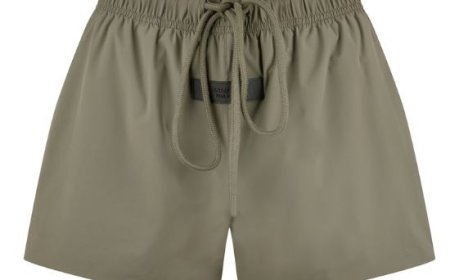Explore Precision Builds with the Most Trusted Retro Arms Gear

Key Takeaways
-
Learn how retro arms elevate classic rifle builds with precision and authenticity.
-
Discover the role of retro M16 upper and m16a4 clone upper components in faithful restorations and modern-day recreations.
-
Get insights into choosing the best parts, tools, and vendors for your AR project.
-
Understand why history buffs and tactical shooters alike love retro-styled platforms.
-
Find out why Retro-Arms is a go-to source for enthusiasts seeking reliable vintage-style gear.
Why Retro Arms Builds Are Making a Comeback

The firearms community is seeing a resurgence in interest for vintage military builds and at the heart of that movement is the demand forretro arms. Whether you're recreating an authentic Vietnam-era service rifle or modernizing a platform with a classic feel, these builds go beyond aesthetics. They're about heritage, craftsmanship, and function.
Many enthusiasts are turning to retro M16 upper assemblies and m16a4 clone upper components for builds that honor the legacy of past military designs. These builds serve not only as functional rifles but as tangible connections to history.
What Defines Retro Arms in Modern Builds
The term retro arms doesnt just refer to older weapons. It defines a category of firearms or parts modeled after classic military service rifles, typically from the 1960s to early 2000s.
Features Commonly Found in Retro Arms
-
Fixed carry handles or A1/A2-style uppers
-
Triangle handguards or classic slimlines
-
20 government profile barrels
-
Matte black or grey finishes for an authentic look
-
Correct-era flash hiders and bayonet lugs
-
No pic rails or minimalist attachment points
These aren't museum pieces theyre shooters. But they maintain the nostalgic design and function of iconic platforms.
What You Should Know About the M16A4 Clone Upper
The m16a4 clone upper is a favorite among collectors and practical shooters alike. Modeled after the service rifle used by the U.S. Marines in the early 2000s, it bridges the gap between vintage and modern.
Why M16A4 Clone Upper Builds Are Gaining Popularity
Enthusiasts are drawn to the m16a4 clone upper for several reasons:
-
Modern Compatibility Features like a flat-top rail allow for optics while retaining a long barrel.
-
Historical Accuracy It replicates the gear Marines actually used during operations in Iraq and Afghanistan.
-
Affordability Many clone parts are still in circulation or produced by respected brands.
-
Performance The 20 barrel and rifle-length gas system offer smooth recoil and improved ballistics.
If you're looking for a mix of nostalgia and tactical function, the m16a4 clone upper is a strong choice.
Breaking Down the Retro M16 Upper
No retro arms collection would be complete without a solid retro M16 upper. Often modeled after the original M16 or M16A1 used in Vietnam, these parts capture a specific point in firearm evolution.
Building with a Retro M16 Upper What Youll Need
Creating a period-correct build requires attention to detail. Heres what typically goes into a retro M16 upper:
-
A1 or A2 forged upper receivers with fixed carry handles
-
Triangle or round handguards
-
20 chrome-lined barrels
-
Original-style gas blocks and flash hiders
-
Forward assist or slab-side uppers depending on the era
The retro M16 upper is a cornerstone for fans who want to recreate battle-proven rifles with modern functionality.
The Joy of DIY Retro Arms Builds
One of the most satisfying parts of the retro arms trend is the DIY spirit. Many hobbyists enjoy piecing together their rifles, choosing components based on accuracy and personal preference.
Benefits of Building Your Own Retro Rifle
-
Control Choose your own parts and quality levels
-
Education Learn how every part works and fits
-
Customization Mix eras or create perfect clones
-
Satisfaction Few things beat firing your own build
Many builders will start with a retro M16 upper or m16a4 clone upper and build down from there, finding lower receivers that match or come close in look and function.
Where to Source Trusted Retro Arms Parts
Sourcing parts for a retro arms build can be a challenge, especially if youre hunting for rare or discontinued models. Fortunately, some companies specialize in these components.
Tips for Finding Quality Retro Components
-
Look for mil-spec quality materials and machining
-
Verify part authenticity when buying used
-
Choose trusted retailers or specialized platforms
-
Consider complete uppers if youre a first-time builder
Online forums, auctions, and niche websites are all viable options but nothing beats a store that focuses onretro arms products.
Discover Quality Retro Arms Components at Retro-Arms
For enthusiasts passionate about authenticity and performance, Retro-Arms is a valuable destination. The site offers a curated collection of retro arms components, including hard-to-find retro M16 upper receivers and popular m16a4 clone upper options.
What makes the platform stand out is its dedication to vintage military styles. Whether you're looking to build a replica service rifle or upgrade an existing one, you'll find parts designed with purpose and historical accuracy. The interface is clean, product info is clear, and the inventory caters directly to retro arms builders.
Things to Avoid When Building Retro Arms Rifles
While diving into the retro arms world is exciting, avoid these common pitfalls:
-
Mixing eras improperly Dont mix M16A1 parts with M4 elements unless building a Franken-gun
-
Buying low-quality barrels These are core to performance
-
Skipping headspace checks Safety first, always
-
Overlooking small details Sling swivels, pins, and finishes matter to purists
When in doubt, check forums or refer to historical photos. Authenticity is part of the fun.
Modern Touches to Add to Your Retro Build
Not all retro builders aim for perfect authenticity. Some like to blend modern efficiency with old-school style. Heres how:
-
Use a retro M16 upper with a free-float handguard
-
Swap in modern fire control groups for better triggers
-
Add optics to a m16a4 clone upper for DMR-style builds
-
Use improved bolt carriers or coatings
These subtle upgrades allow you to enjoy vintage aesthetics without sacrificing function.
Bottom Line
The rise of retro arms reflects more than nostalgia its a return to proven design and timeless function. Whether you're drawn to the sleek profile of theretro M16 upper or the versatile setup of the m16a4 clone upper, there's something for every shooter in this growing space.
And when you're ready to source the best parts, dont overlook Retro-Arms. Their commitment to quality and history makes them a reliable partner for your next project. In a world of ever-evolving platforms, building with retro arms gives you the chance to own a piece of firearm legacy crafted by your hands, powered by purpose.
Frequently Asked Questions (FAQs)
Whats the difference between a retro M16 upper and a modern upper?
A retro M16 upper typically includes a fixed carry handle, triangle or round handguards, and a 20 barrel, replicating M16 or M16A1 designs. Modern uppers favor modularity and rails.
Is an M16A4 clone upper suitable for modern tactical use?
Yes. The m16a4 clone upper combines a classic 20 barrel with a flat-top rail, making it ideal for adding optics and upgrades while maintaining retro style.
Are retro arms builds legal to own and use?
In most U.S. states, retro arms builds are legal for civilian use. Be sure to comply with local laws on barrel length, flash hiders, and stock configuration.


































